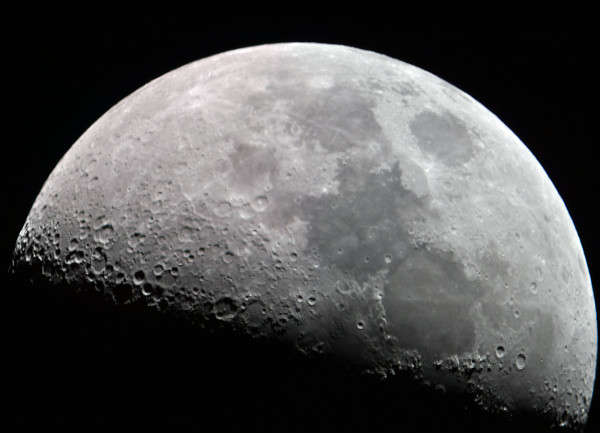
Capture date : 2015/05/26
ED80 + Televue Powermate 5x + Baader Hyperion 8mm + Nikon D90
A quick go on this spectacular nebula, as it is currently too low on the horizon for serious light gathering.
I hope next year’s weather will allow more data!
Target details
The Rosette Nebula (also known as Caldwell 49) is a large, circular H II region located near one end of a giant molecular cloud in the Monoceros region of the Milky Way Galaxy. The open cluster NGC 2244 (Caldwell 50) is closely associated with the nebulosity, the stars of the cluster having been formed from the nebula’s matter.
The complex has the following NGC designations:
NGC 2237 – Part of the nebulous region (Also used to denote whole nebula)
NGC 2238 – Part of the nebulous region
NGC 2239 – Part of the nebulous region (Discovered by John Herschel)
NGC 2244 – The open cluster within the nebula (Discovered by John Flamsteed in 1690)
NGC 2246 – Part of the nebulous region
The cluster and nebula lie at a distance of some 5,200 light-years from Earth (although estimates of the distance vary considerably, down to 4,900 light-years.) and measure roughly 130 light years in diameter. The radiation from the young stars excites the atoms in the nebula, causing them to emit radiation themselves producing the emission nebula we see. The mass of the nebula is estimated to be around 10,000 solar masses.
It is believed that stellar winds from a group of O and B stars are exerting pressure on interstellar clouds to cause compression, followed by star formation in the nebula. This star formation is currently still ongoing.
A survey of the nebula with the Chandra X-ray Observatory in 2001 has revealed the presence of very hot, young stars at the core of the Rosette Nebula. These stars have heated the surrounding gas to a temperature in the order of 6 million kelvins causing them to emit copious amounts of X-rays.
Gear used
Sky-Watcher 80ED Pro Black Diamond
SBIG 8300M
HEQ5 Pro
Guiding camera: QHY CCD QHY5 mono
Focal reducer: Skywatcher .85x Focal Reducer & Corrector
Filters: Baader 7nm Ha 2”
Starlight Xpress Starlight Xpress FW 5*2”
Processed in PixInsight
Resolution: 1743×1380
Dates: April 12, 2015
Frames: Baader 7nm Ha 2”: 10×600″ -5C bin 2×2
Integration: 1.7 hours
Darks: ~20
Flats: ~20
Bias: ~20
Avg. Moon age: 21.98 days
Avg. Moon phase: 51.77%
Bortle Dark-Sky Scale: 3.00
Temperature: 3.00
Locations: Amarynthos obs, Amarynthos, Evia, Greece
Audience preferences are extracted from Facebook’s aggregate information about demographics, page likes, location and facebook usage, while extra data regarding purchase behavior and household info is currently available for audiences in the United States.
Given that this feature was introduced initially for the US market, it comes with certain “bugs” for global access outside the US.
Read more about audience insights not working?
Just found some data from the early tries in astrophotography from the summer of 2014 and gave them a go at post processing.
A lot of comma on the edges since I didn’t have an FFR at the time.
The image was captured with a Canon 350D with IR mod (filter removal). Halos around the stars are due to UHC-S filter.
This image contains: Pelican nebula, IC 5070, The star 57Cyg, The star 56Cyg
Sky-Watcher 80ED Pro Black Diamond
Canon 350D
Filters: Baader UHC-S
HEQ5 Pro
Guiding telescope : SKYWATCHER 70/500
Guiding camera : QHY CCD QHY5 mono
Software: PixInsight
Resolution: 3574×2414
Dates: July 28, 2014
Frames: Baader UHC-S : 6×720″ ISO800 bin 1×1
Integration: 1.2 hours
Darks: ~10
Flats: ~10
Bias: ~20
Avg. Moon age: 0.94 days
Avg. Moon phase: 1.00%
Bortle Dark-Sky Scale: 3.00
Temperature: 28.00
RA center: 312.657 degrees
DEC center: 44.441 degrees
Pixel scale: 2.198 arcsec/pixel
Orientation: 94.943 degrees
Field radius: 1.317 degrees
Location: Katsaros obs, Katsaros, Kalamata, Greece